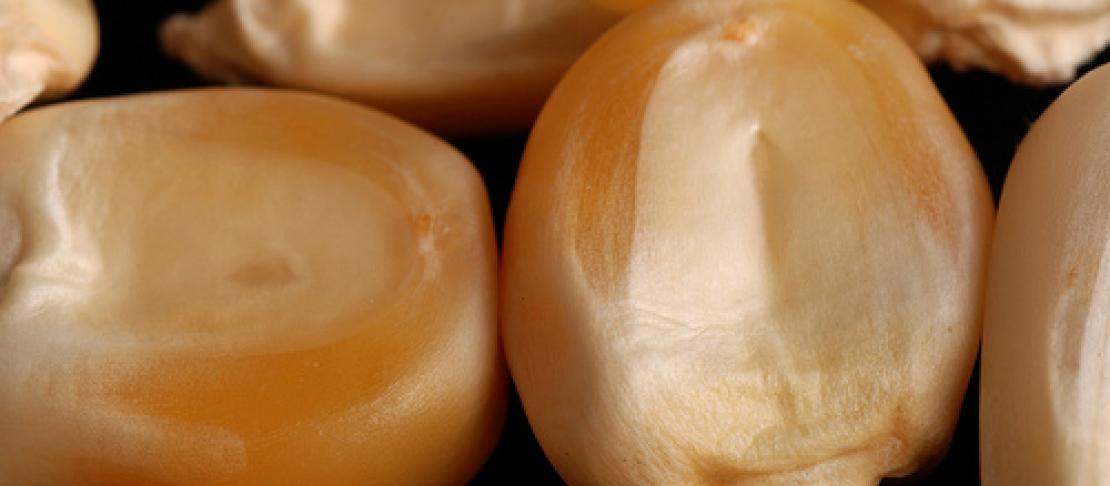Strength through variety? Seed systems in future climates

One paradox of climate change is that while as much as a third of global land surface might experience entirely novel climates, overall the world’s climate is likely to be more homogenous (PDF). The implication is that we need to accelerate both experimentation (for novelty) and exchange (across distant but similar environments) to help our crop, livestock and fish varieties adapt.
Small-scale farmers are very willing to experiment with new varieties, and often grow more than one variety of the same crop. But while “improved varieties” have become widely popular, many farmers still prefer to plant local landraces, conserved on their own farms or exchanged with neighbours. A major concern, then, is whether these highly localised seed systems have sufficient genetic and geographic scope to keep up with changing agricultural climates.
Mauricio Bellon, David Hodson and Jon Hellin tackle this question in their article Assessing the vulnerability of traditional maize seed systems in Mexico to climate change. Currently seed collection is very local indeed: in 20 sites ranging 10 to 2980 m above sea level, 90 % of farmers’ seed lots are obtained within 10 km, and 87% within an altitudinal range of 50 m. Future seed will need to be sourced from locales that match the emerging climates farmers will encounter.
Fortunately, climate model forecasts from Mexico (the median of 3 GCM models x 2 IPCC scenarios for 2050) indicate that the majority of sites are within 10 km of their predicted future maize agro-climate – the current range of traditional seed systems. This is associated with Mexico’s relatively high spatial heterogeneity in altitude and climate. But there is important variation among the agro-climatic environments. The highlands will likely experience most change, variability and vulnerability: four of nine sites are likely to shift to different maize agro-climates, possible directions of change are multiple, and the average distance to an analogous future climate is 13 km, compared to 1 km at mid and low altitudes.
Seed systems are, of course, only one of many intertwined components of livelihoods and food systems that are vulnerable to climate change. Furthermore, climatic extremes, not just averages, will matter to agriculture. For example cyclones will probably become much more frequent along Mexico’s coastal lowlands. Nevertheless, policy can benefit enormously from studies like Bellon, Hodson and Hellin’s, helping agencies to target support towards specific seed systems, rather than assuming undifferentiated needs across all farming communities and agro-climatic zones. These principles are especially applicable to similar highland areas where landraces predominate, such as upland rice in Vietnam and Nepal, but may also signal priority for intervention in seed systems where major climate shifts are predicted but current analogue sites are distant.
Increasing global climate homogeneity is in some ways a beacon of hope for worldwide food security: it should allow far-flung exchange of germplasm, technologies and farmers’ experiences. More locally, as Bellon et al’s article hints, heterogeneity at the right scale can assist farmers to experiment and to adapt their seed systems proactively – abreast or even ahead of climate change.
Links:
- John W. Williams, Stephen T. Jackson and John E. Kutzbach. 2007. Projected distributions of novel and disappearing climates by 2100 AD. Proceedings of the National Academy of Sciences 104: 5738-5742. DOI 10.1073/pnas.0606292104
- Sam Fujisaka, David Williams and Michael Halewood (eds). 2011. The impact of climate change on countries' interdependence on genetic resources for food and agriculture. FAO Commission on Genetic Resources for Food and Agriculture. Background study paper No. 48. Download PDF.
- Andy Jarvis. July 2011. Towards a more homogenous world: genetic resources and climate change. CIAT Blog.
- Mauricio R. Bellon, David Hodson and Jon Hellin. 2011. Assessing the vulnerability of traditional maize seed systems in Mexico to climate change. Proceedings of the National Academy of Sciences. DOI 10.1073/pnas.1103373108 (Free version at this link)
- James Done, Greg J. Holland, Cindy Bruyère and Asuka Suzuki-Parker. 2011. Effects of Climate Variability and Change on Gulf of Mexico Tropical Cyclone Activity. DOI 10.4043/22190-MS
This blog is the September installation of AgClim Letters, a monthly e-bulletin on science and policy written by Sonja Vermeulen, Head of Research for CCAFS. Sign up to receive AgClim Letters bulletin. Your comments are welcome below.